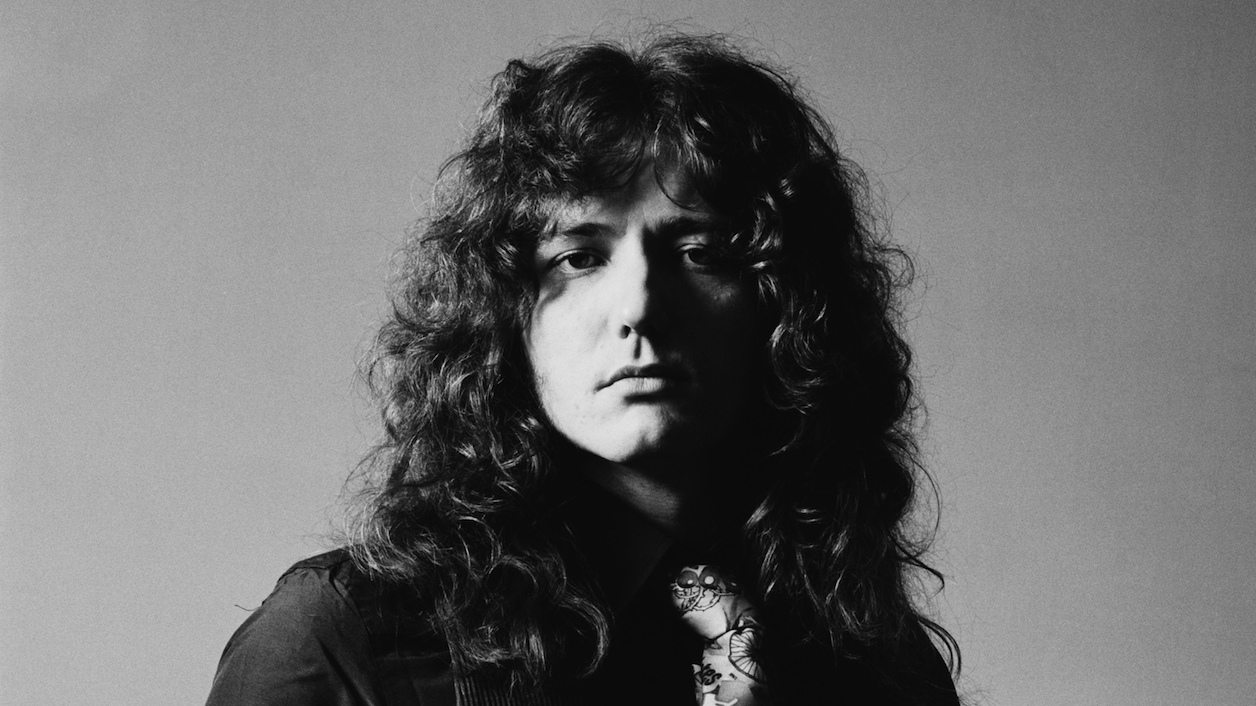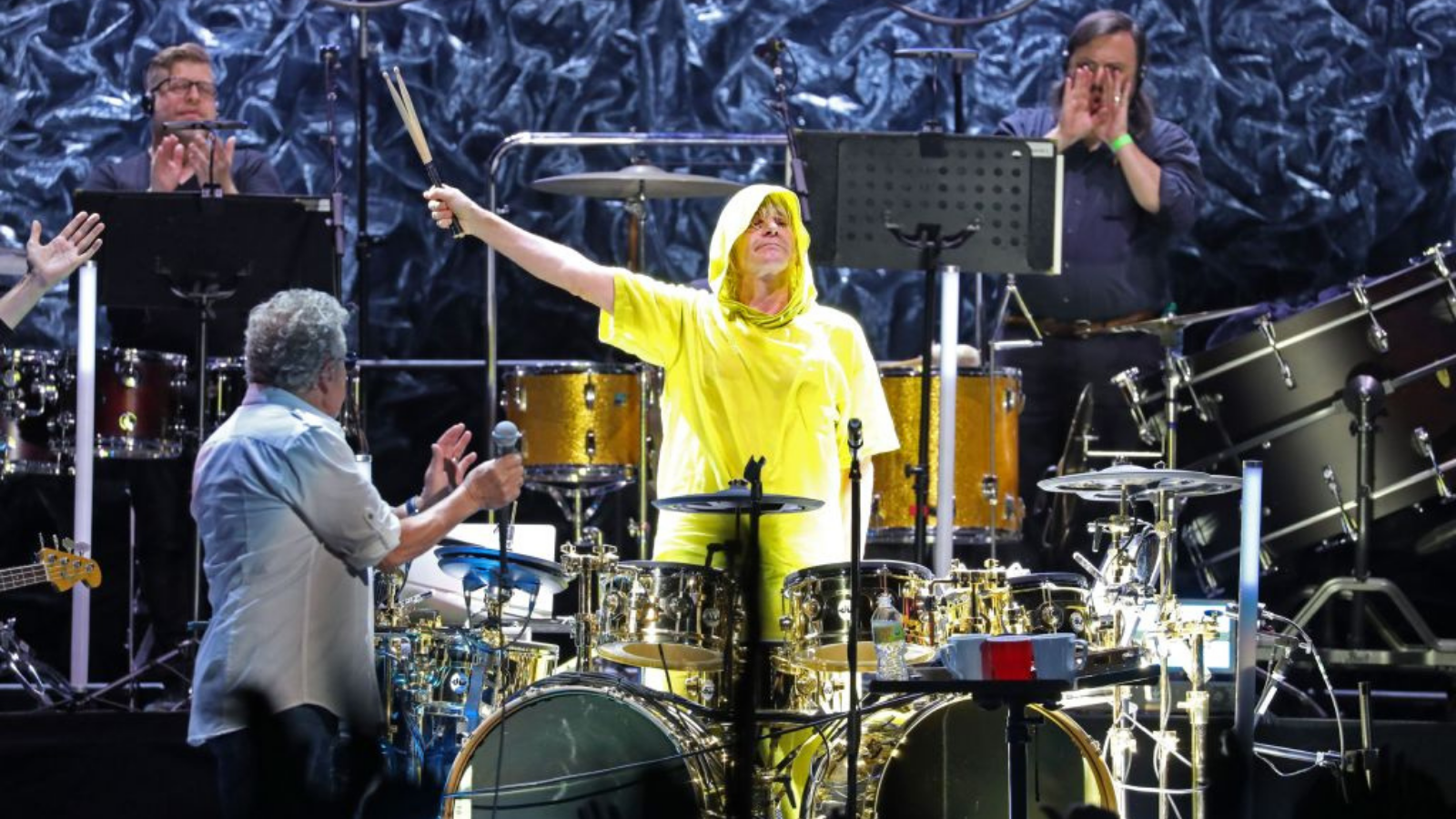Greatest Albums Of The 70s: 100-87
From Budgie to ELO, let the great 70s albums countdown begin...

Our Greatest Albums Of The 70s, numbers 100 to 87.
100) IN FOR THE KILL! – Budgie (MCA, 1974)
The fourth album from the Welsh trio of bassist/vocalist Burke Shelley, guitarist/ vocalist Tony Bourge and drummer Pete Boot was a ball of proto-metal energy. Tracks such as Crash Course In Brain Surgery and Zoom Club had a quirky yet effective groove, cementing Budgie’s reputation with successive generations of metalheads. At the time, Budgie weren’t deemed to be cool, but this album was a powerfully convincing message.
What they said at the time: “There’s nothing here to fire the imagination, only to pulverise it. It’s full of spastic, lurching riffs and juvenile vocals.” Melody Maker
99) CLEAR SPOT – Captain Beefheart (Reprise, 1972)
After pushing rock as far as it could stretch, Captain Beefheart sought success by hooking up with Doobies producer Ted Templeman. Together they fashioned Clear Spot’s concisely listenable but still uniquely alien gumbo fury – climaxing with the mind-blowing Big Eyed Beans From Venus. But it still didn’t sell.
What they said at the time: “It feels good to know that Beefheart has finally come into his own as a flat-out, full-throttle rock’n’roller.” Creem
Sign up below to get the latest from Classic Rock, plus exclusive special offers, direct to your inbox!
98) NORTHWINDS – David Coverdale (Purple, 1978)
The second solo album from David Coverdale was a lot closer to rootsy blues and soul than anything he had done with Purple. It was the template for where Coverdale would go in the early blues-rock days of Whitesnake, but it was overlooked at the time due to a lack of promotion.
What they said at the time: “Eight chunky rock songs that range from ballads to rockers. [Coverdale] sings with conviction and plenty of husky firepower.” Record Business
97) THE GODZ – The Godz (RCA, 1978)
Produced by Grand Funk Railroad drummer Don Brewer, The Godz’s debut was primitive American hard rock stripped to its bare bones. Guitarist Eric Moore’s chops dominate, while the endearingly doltish biker anthem Gotta Keep A Runnin’ made Twisted Sister sound like Muse. They try to tell us that rock’n’roll is dead – but Godz’s rock’n’roll ain’t dead. Not by a long chalk.
What they said at the time: “People have compared them to Grand Funk but I reckon they’re better, tighter, more in the traditional vein of good-old, kick‑ass rock.” Sounds
96) Mëkanïk Dëstruktïẁ Kömmandöh – Magma (A&M, 1973)
Three albums in, drummer/composer Christian Vander took his French ensemble to the limits of prog-jazz eccentricity. You didn’t have to understand Vander’s mythic language of Kobaïan to get this symphonic sci-fi saga – the explosive polyrhythmic melding of Swingle Singers, Carl Orff and metal sufficed. The album was produced by former Yardbirds/Stones impresario Giorgio Gomelsky, and it also birthed the cultish prog subgenre of Zeuhl.
What they said at the time: “Listening requires a lot of mental adjustment, a rethink about musical values… this is music of the spheres.” Melody Maker
95) STRAY DOG – Stray Dog (Manticore, 1973)
Texans Stray Dog were an oddity, insofar as they managed to enjoy the simultaneous patronage of ZZ Top’s Billy Gibbons and ELP’s Greg Lake. This rabid debut album included a red-hot cover of the Top’s Chevrolet and was released on ELP’s own Manticore label. The standout track is undoubtedly Rocky Mountain Suite (Bad Road), a bone-raw heavy blues workout that’s fuelled by WG ‘Snuffy’ Walden’s incendiary guitar. But the Dog didn’t live up to their early pedigree, and ‘Snuffy’ snuck off to score music for television shows, including The West Wing. GB
What they said at the time: “Their mongrel sound just gets more beat-up and mangy by the second.” Sounds
94) TUBEWAY ARMY – Tubeway Army (Beggars Banquet, 1978)
Gary Numan’s debut set out the DNA of 1979’s hottest act – a fascination with Philip K Dick, chronic social dysfunction and Ziggy storytelling – and slathered impressive guitar work over primitive synth-punk.
What they said at the time: “Simple and savage future projections.” NME
93) TAGO MAGO – Can (United Artists, 1971)
With its unintelligible lyrics, free‑form structures and epic grooves, Tago Mago was never likely to turn Can into chart sensations. Yet its abstract brilliance and hallucinogenic art‑rock signalled a bold new form of German expressionism.
What they said at the time: “I don’t get the impression that there’s any deep sense of the spirit of rock and roll in the music.” __ _Melody Maker___
92) NO OTHER – Gene Clark (Asylum, 1974)
1973’s Byrds reunion afforded Clark a solo deal with Asylum. Alas, the label failed to appreciate this country-rock masterpiece with metaphysical lyrics and psychedelic gospel overtones, and didn’t promote it.
What they said at the time: “A refinement of all Clark has done with The Byrds and as a solo artist.” Sounds
91) III – Santana (CBS, 1971)
Santana went the full Chicano monty with III, enlisting a 17-year-old Neal Schon to atomise scorching rock licks across free‑flowing cross-rhythms. Everybody’s Everything was the high point on this Billboard No.1 album.
What they said at the time: “You don’t just listen to Santana; you get inside the rhythm and participate.” Rolling Stone
90) LEGS DIAMOND – Legs Diamond (Mercury, 1976)
Often described as the American Deep Purple – primarily due to Michael Prince’s flamboyant Jon Lord-style keyboards – California’s Legs Diamond were actually more streamlined and cocksure than their Brit counterparts, while preening frontman Rick Sanford owed more to Robert Plant than Ian Gillan. When, on Satin Peacock, Sanford crooned, ‘Kiss me if you miss me, but don’t mess up my hair,’ he unwittingly summed up the anguish of the forthcoming hair-metal generation.
How do you view Legs Diamond’s debut album now?
Michael Prince (guitar/keyboards): I’m still very happy with it. It’s a good, raw-sounding record. It’s no holds barred. We got Derek Lawrence to produce it, who did the first three Deep Purple albums. Kiss wanted to cover one of the songs on the record, Satin Peacock, but we wouldn’t let them.
Legs Diamond shared management with flamboyant glam-metallers Angel. How did you create your own image?
We started dressing like gangsters, in pinstripe suits and hats. [The group named themselves after infamous 1930s gangster Jack ‘Legs’ Diamond.] Our singer, Rick Sanford, used to come on at the start of the show and pull out a gun. It didn’t have real bullets in it, obviously, but he used to fire it straight at the audience. I don’t think you’d be able to get away with that today…
Your last record came out ten years ago. Is the band dead and buried?
There are diehard fans out there who keep asking us if we’re going to do a new album – and the answer is yes. Rest assured, Legs Diamond ain’t done yet.
89) NEXT – Sensational Alex Harvey Band (Vertigo, 1973)
They didn’t call him ‘Scotland’s Tommy Steele’ for nothing. In the post-Elvis era, Steele was the textbook ‘all-round entertainer’. With Jacques Brel chanson, bullish Gorbals swagger, vintage rock’n’roll panache, arch musical theatre notes and embryonic electronica, Next saw Harvey deliver in every which way.
What they said at the time: “Thank Christ, somebody is doing something a little unusual – with depth, style and the balls of a rampant rhino.” Sounds
88) COUNTDOWN TO ECSTASY – Steely Dan (ABC, 1973)
Dan’s second album is the connoisseurs’ choice. Becker and Fagen brought jazz cool and rapier intelligence to bear on LA vacancy with all the melodic malice they could muster.
What they said at the time: “Fagen and Becker have a gift for weaving songs out of American place names, fragments of conversations and fag-ends of dreams.” Let It Rock
87) ELDORADO – ELO (Warner Brothers, 1974)
ELO’s fourth album saw mainman Jeff Lynne add conceptual weight as he moved from prog to pop. UK audiences were still fazed by the orchestral flourishes, but America embraced it: Can’t Get It Out Of My Head was their first US Top 10 hit.
What they said at the time: “The heavy strings and choral backings serve as effective filters, enhancing the dreamlike atmosphere of composer Jeff Lynne’s storyline.” Rolling Stone
